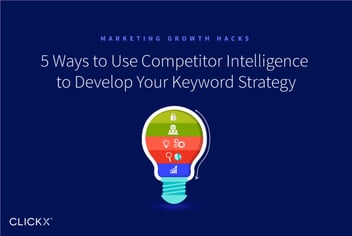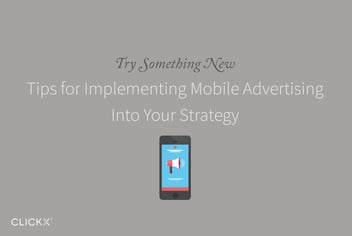How to Structure a Winning About Page for Your Business Website
You recently learned how to write about your business without sounding like a salesman. But how do you connect these pieces together in a cohesive About page?
Thankfully, doing so isn’t rocket science. You can establish rapport with any potential customer by including a few key sections that show how you will solve their problem(s).
Today, we’ll take you through exactly what sections to include. When we’re finished, your About page will be a powerful marketing tool for your business.
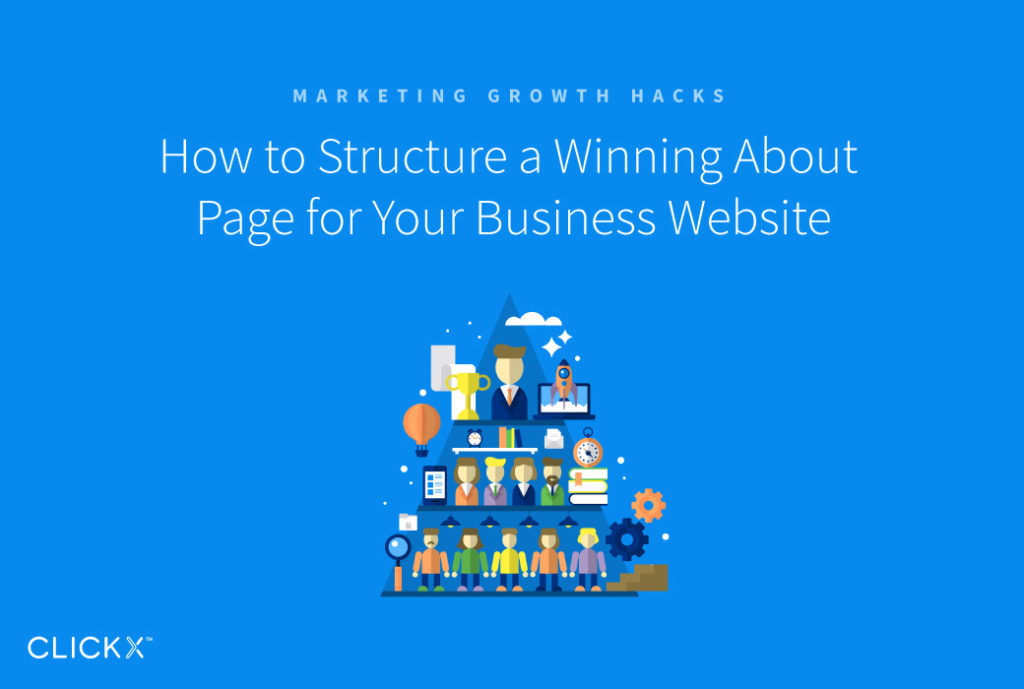
1. Start With a Winning Image
A picture is worth a thousand words, or so they say. Images are well known to increase views and reader engagement online. It makes sense to start your page with one that helps you communicate the right message.
You’re looking for an image that captures your business’s mentality. Consider your branding – what relationship dynamic does your business build with its customers? Is it fun and quirky, or serious and grounded?
[Tweet “A strong visual on your About page sets customer expectations for your business.”]
A strong visual sets the mood for the page. It communicates what interactions they can expect from you in the future.
Once you understand the end result you’d like to achieve, it’s time to choose the right image. While there are many images out there to evoke nuanced emotion, here are six basic categories to get you started:
- Portraits can elicit a deep connection, hanging on the mood of the photo’s subject.
- Baby photos stimulate our pleasure hormones; it triggers a nurturing response in the viewer.
- Animal photos have a similar effect on our pleasure center.
- Inspirational photos enable us to imagine ourselves overcoming our current obstacles.
- Nostalgic themed images remind us that we’re part of a larger scheme, and can help to put our problems in perspective.
- Photos with happy expressions bring out the happiness in ourselves, thanks to emotional contagion.
Real World Example
Rent the Runway sets the tone by using a warm photo of technology next to mugs full of analog sketching tools. “Rent the Runway is a fashion company with a technology soul,” they tell us after the break.

2. Include a Welcome Video.
Landing pages with video can convert 80% more potential leads than without. A welcome video is optional, but can be well worth the effort.
Here’s how to script your own:
- Introduce yourself. This should only take one or two sentences and include your brand promise.
- Introduce the customer’s challenge. Identify what your customer is struggling with.
- Explain what you have in common. Pick one, easy to understand example to show how you understand what they’re going through.
- Offer something. How will the customer’s life improve by finding out more about your business?
- Conclude with a call to action. This could be to read the rest of your About page, subscribe to your newsletter, or even schedule a free consultation.
Real World Example
LessFilms infuses humor into their welcome video. Since they are a company offering creative services, it’s good to know you’re signing up to work with interesting people.

3. State Your Unique Value to the Customer
Your carefully selected image (or welcome video) sets the stage for the copy. You should start by clearly stating how your business can make the customer’s life easier. This message is your Unique Selling Proposition (USP).
There are a few major steps to discovering what this is for your business and its customers:
- Define the problem your customers are experiencing. Talk to your customers to ensure it’s a problem they identify with.
- Evaluate whether your breakthrough is unique and compelling.
- Build your value proposition. Who is it for? What are they dissatisfied with? What is your product, and what does it provide? How is it different from the current alternative?
Real World Example
Yellow Leaf Hammocks leads strong: “Ridiculously comfy hammocks. Impeccable craftsmanship. Transformative impact.”

4. Add Testimonials
By now the reader understands who you are, and why they should care. The next step is to build trust. What better way than to let others explain why you’re trustworthy? Studies show that testimonials can increase conversion by 34%.
There are two types of testimonials: internal and external. The former comes from your employees, while the latter comes from satisfied customers.
You can include one or both. Employee testimonials provide insight to who makes up your company. From the customer’s perspective, happy employees translates into outstanding customer service. Meanwhile, customer testimonials provide social proof that others have worked with you and recommend your business.
Be sure to include an image with each testimonial to make it personal.
Quality testimonials don’t just happen. These starter questions will help you glean insightful testimonials from your customers:
- What was the problem you experienced before purchasing our service?
- What would have prevented you from buying our service?
- What was the result of buying our service?
- What specific feature did you like most about our service?
- Would you recommend our service to others, and if so, why?
- Is there anything else you’d like to add?
Real World Example
Again, Rent the Runway stands out by creatively including a grid of employee images presented alongside unique employee experiences created by the company.
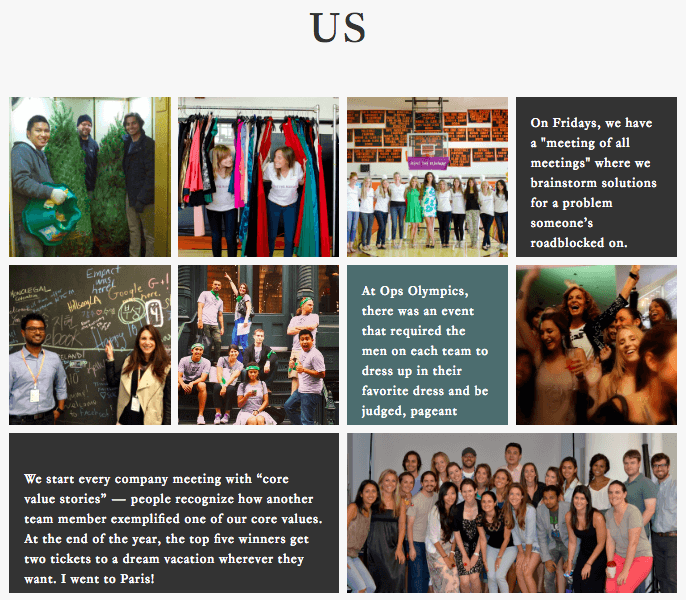
5. Share Your Story
Finally, the visitor is hooked. They understand how you make their life easier, and testimonials have helped them judge you as trustworthy. Now you can talk more about the details of your company. They will have the patience to get to know who you are.
[Tweet “Your company story can make or break a customer’s decision to choose you over a competitor.”]
Your company story can make or break a customer’s decision to choose you over a competitor. This is the part where you’ll seal the deal by presenting the real meat of your About page.
- Expand on your definition of value.
- Establish common ground between you and the customer. You likely view your own company a bit differently than they do.
- Adopt a friendly tone with your writing.
Real World Example
Marie Catrib’s is a small restaurant in Grand Rapids, MI. By the time you finish reading their About page, you’ll feel as if you actually know Marie herself.
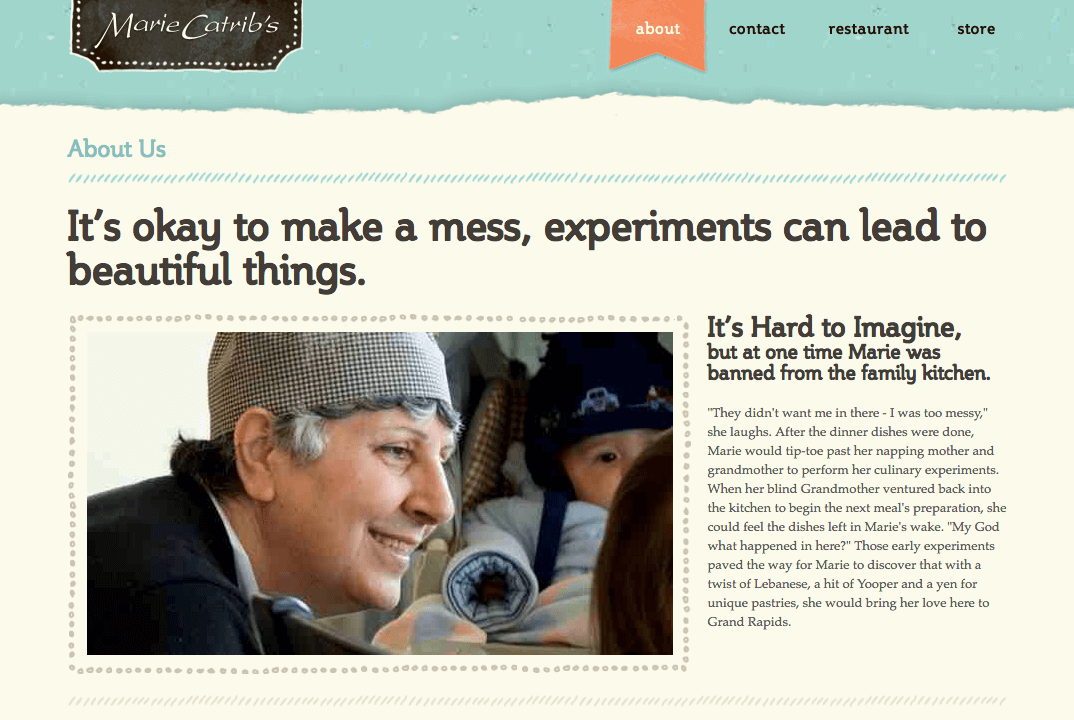
Conclusion
No matter how amazing you get at writing about your business, that writing still requires a well-structured About page to live on. A compelling strcuture can make the difference whether a customer chooses you over your competition.
Be sure to include these sections on your page:
- An image that sets the proper tone for your business type.
- A welcome video (optional).
- The unique value you offer to the customer.
- Customer and/or employee testimonials.
- The company story.
What do you find works best for you on your About page? Let us know in the comments section below!

